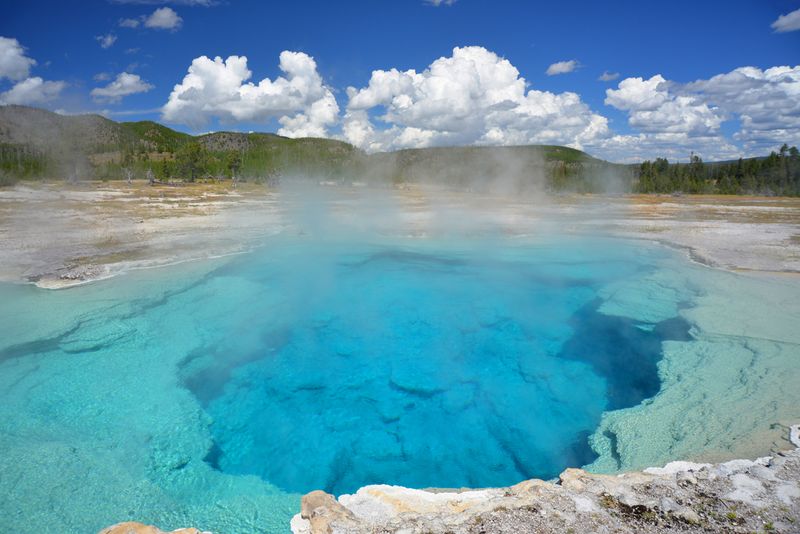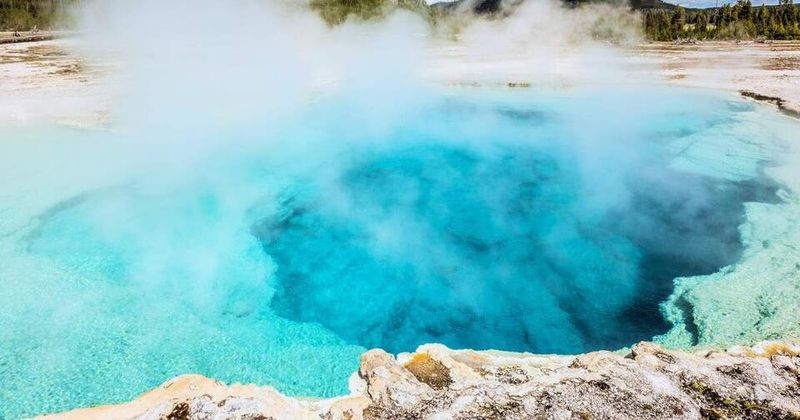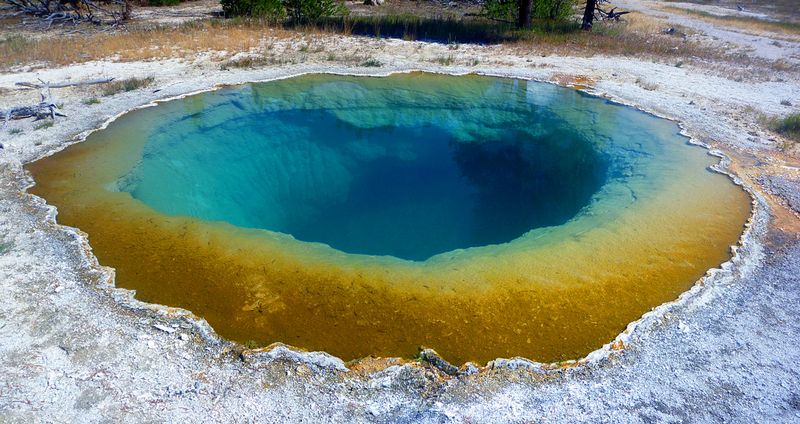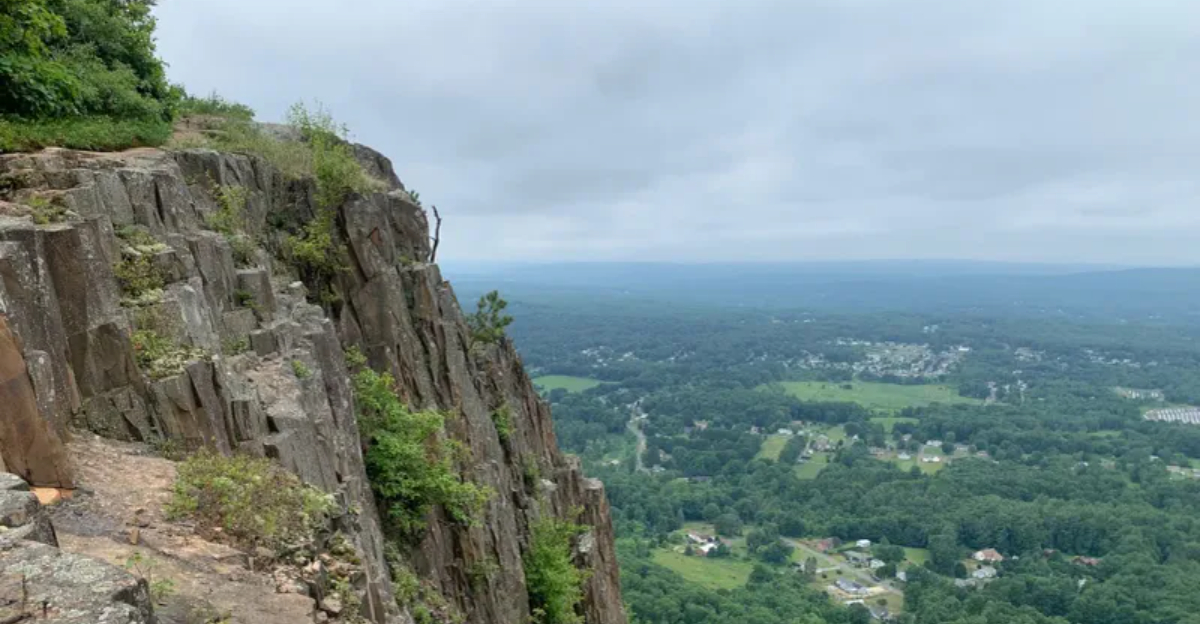A Hidden New Blue Thermal Pool in Yellowstone National Park Wyoming Stirs Curiosity
Something remarkable has taken shape in Yellowstone National Park’s Norris Geyser Basin: a brand-new thermal pool, shimmering in a pale milky blue, has appeared where there was nothing just months ago.
First detected between late December 2024 and February 2025, the pool likely formed after one or more small hydrothermal explosions beneath the surface opened a fresh pathway for hot water to rise.
The Birth of a Hydrothermal Feature
Geologists confirmed the pool’s appearance earlier this year during surveys and satellite analysis.
Measuring about 13 feet across and located west of the landmark known as “Tree Island” in the Porcelain Basin, it sits roughly 650 feet from the nearest boardwalk.
The water temperature is around 109°F – far cooler than many of Yellowstone’s iconic hot springs – but the hue is striking.
Its milky baby-blue coloration comes from dissolved silica, which scatters light in the water, giving it that ethereal appearance.
A Rare Event in Yellowstone’s Living Landscape
New thermal features like this are rare but not unheard of; Yellowstone is one of the most geologically active regions on Earth.
The last time a notable new feature appeared was in 2009, also in the Norris area.
The landscape is constantly reshaped by underground pressure, shifting hydrothermal systems, and small explosions that break through to the surface.
Scientists have not yet assigned the pool an official name, though it has been informally referred to as a “baby blue thermal pool.”
Its future is uncertain – hydrothermal features often evolve quickly, sometimes disappearing within months or transforming into entirely different formations.
Why It Matters for Research
Although not yet colonized by the brilliant orange and green microbial mats seen in older hot springs, this pool offers a unique chance for researchers to study the very beginnings of microbial life in a new hydrothermal environment.
Monitoring equipment and ongoing observation will help reveal how bacteria and archaea establish themselves, potentially offering insights into the origins of life and the adaptability of organisms in extreme conditions.
Safety and Visitor Information
Because the pool lies beyond existing boardwalks, the public cannot currently visit it up close – and for good reason.
Ground near new hydrothermal features can be fragile, and water temperatures, though lower than many geysers, can still cause severe burns.
Visitors are advised to stick to designated trails and enjoy Yellowstone’s many other accessible wonders while scientists continue to study this latest surprise from the Earth’s depths.










